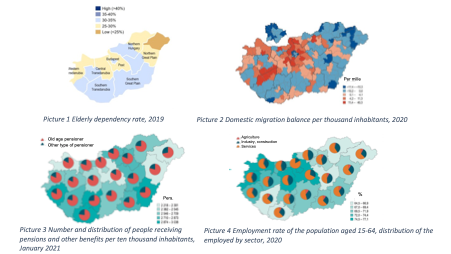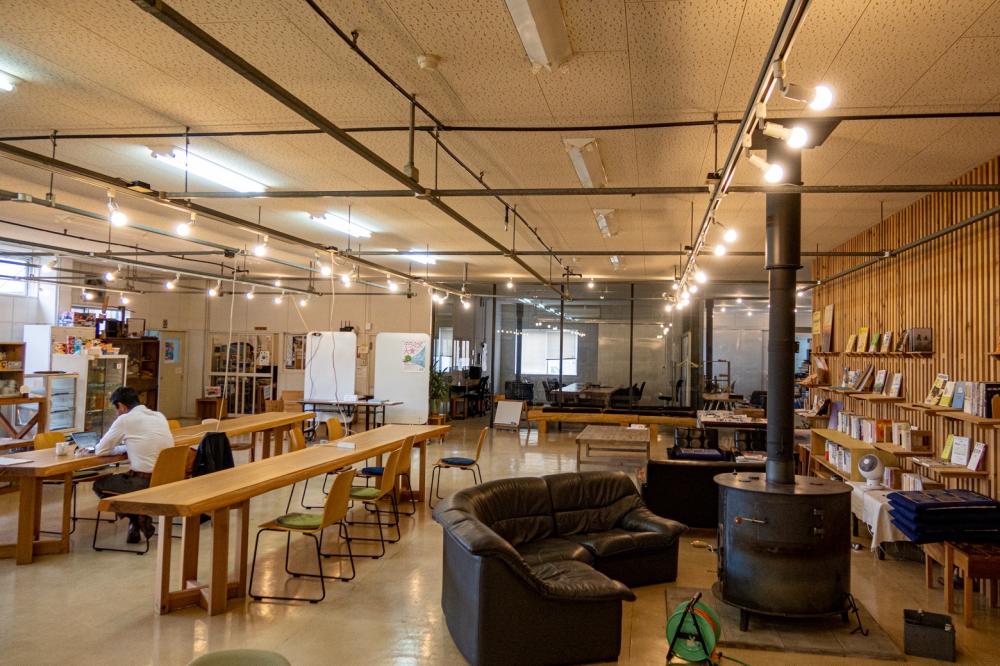by Dalma Dorko
Depopulation of individual regions has long been a problem for Japan, the world's fastest aging nation. A number of initiatives have been launched by Japan in order to combat this phenomenon. Among its efforts, Green Valley is known worldwide for its success. Kamiyama town is located in Tokushima Prefecture in the southern part of Japan on Shikoku Island. Shinya Ominami, a Stanford alumnus returning to Kamiyama from San Francisco decided to help revive the town after its population plummeted for so long. Although he started with small projects, some of them became very popular. For example, Kamiyama Artist in Residence offers artists the opportunity to live in the town for three months and to contribute to the community. Locals also play an important role in the process, they are the ones deciding which artists can benefit from this opportunity and they also assist the artists as they arrive. A team of local volunteers provides assistance to each arriving artist, both in daily life and with needs related to the artwork. These roles are referred to as "mom" and "pop" roles. A wide range of artists have participated in the program, including the Transylvanian visual artist Andrea Dezsö. In response to the sensation of the program, the town introduced a new program called Bed&Studio which allows applicants to rent out rooms for stay and use studio space regardless of their enrollment in the Artist in Residence program. Due to its initial success, as well as a fast internet network, Kamiyama gained a reputation, and as a result, companies were invited to set up satellite offices in the town, where traditional houses had been transformed into modern offices. There are now more than ten companies opening satellite offices here, and similarly to the artist program, it has become so popular that hotels have been opened for people who wish to relocate only temporarily for work.

Hotel room for those wishing to work in Kamiyama
Source: https://www.east-tokushima.jp/en/explore/detail.php?id=163
In addition, Tokushima's Kamiyama city will be home to the first school of tech entrepreneurship in Japan in 2023. A variety of skills will be taught to the students, ages 15 to 20, including engineering, programming, designing, and marketing.
While Mr. Ominami's goal was not as ambitious as reversing the city's population decline, the town nonetheless managed to slightly increase its population despite the fact that the trend in Japan is in the opposite direction. The initiative is nowadays referred to as "Creative Depopulation."
The question arises: can something similar be achieved in Central Europe’s aging and depopulated regions?
As an example, let us look at Hungary. Despite the rising life expectancy in Hungary (76 years in 2020, which is still below the EU average), its population has been declining, resulting in a higher and higher old age dependency ratio. The old age dependency ratio is predicted to reach 57.6 % in 2075 from 33,6% in 2022. There is a trend for both internal and external migration in the country, however, the latter appears to be declining. Small rural communities and villages are more susceptible to the problem of internal migration, as the elderly tend to remain in place, while active labour tends to migrate to larger cities with more job opportunities. Over time, this leads to the aging of individual regions, resulting in depopulation. (It should be noted that Hungary is still in a better position than other OECD countries in terms of regional differences of old age dependency ratio.)
Taking a look at Hungary's map that shows internal migration, the ratio of old to active population, and employment data, we can infer that there are parts of the country where old/age dependency ratio and outward internal migration are higher while employment levels are low. There is a tendency for these rather sad results to take place in the same regions. Recent data shows Northern Hungary, Southern Transdanubia, and the Southern Great Plain are seeing the biggest population declines.

Source: https://www.ksh.hu/docs/hun/xftp/idoszaki/pdf/ter_kep_2020.pdf
This detailed examination of Hungary's demographic processes, internal migration, and identification of the depopulated areas is worthwhile, because this will help us determine which regions of the country are most affected by the aging and depopulation processes, and what our future development options are. It is also very important to consider the employment situation of the projected population in relation to the demographic process. KSH data indicate that the highest unemployment rates tend to occur in regions where the population is aging, the region is depopulating, and employment levels are lower. As a consequence of a lack of jobs, young people are more likely to leave the region, resulting in an intensification of aging and disengagement. Schools and health facilities will become unsustainable, trade, services, and employers will cease to operate, making such a region unattractive to them in the future. Sooner or later, this is reflected in the distribution of GDP per capita, the differences between certain regions become stronger. Hungary already occupies a “prominent” place among the OECD countries in this regard.
Regarding existing conditions, it is also clear that several requirements for the establishment of Kamiyama are in place in the country.
First of all, countless picturesque towns and villages are located in aging and depopulated areas of the country. Secondly, regarding internet connectivity in the country, according to the 2022 Digital Economy and Society Index report, Hungary performs well in terms of broadband connectivity. It remained a top performer in the take-up of at least 1Gbps broadband, as 22% of households subscribed to such a service in 2021, compared to 7.6% in the EU. Also, the country scores above the EU average for overall fixed broadband take-up, 5G spectrum, and fixed very high-capacity network coverage (VHCN). Consequently, broadband connectivity is available throughout the country, and infrastructure is well developed. In addition to it, Hungary is planning to use the European Regional Development Fund (ERDF) to support broadband infrastructure deployment in its more rural regions.
Moreover, a similar project could also be implemented in Hungary as Kamiyama Artist in Residence - giving artists a space to work, adding value to local communities, and creating something tailored to local needs - maybe with the help of Mr. Ominami, the program's creator himself. Hungary could benefit from the talent that already exists in universities, such as the Moholy-Nagy University of Art and Design, by involving them in the development processes.
The idea of workcation could also be incorporated into the Hungarian Green Valley initiative as a philosophy to attract people who wish to work surrounded by nature and laid-back vibes.
A way to attract innovative companies to the area would be to convert unoccupied traditional Hungarian houses/cottages or unoccupied industrial spaces into co-working spaces. Industrial space design gained popularity in other parts of the world as well.

Co-working space in Kamiyama
Source: https://www.east-tokushima.jp/en/explore/detail.php?id=163
Since the pandemic has shaken the world, the demand for moving out of busy cities like Budapest is increasing. Several people have already taken advantage of widely available working from home options. Leveraging this momentum could be beneficial for areas experiencing depopulation and aging.
Innovative agricultural technologies could also capture the attention of the business world and investors. As an example, Smartkas is an agricultural and food technology enterprise that employs artificial intelligence to grow vegetables in smart farming environments throughout the year, in any climate. By providing some type of support to a high-tech agricultural player like this, we could encourage them to join our initiative.
By leveraging the natural resources of a depopulated areas, another option would be to create a sustainable energy hub. Wouldn't it be amazing to become the center of a high-tech gravity energy storage facility like this?
Finally, we must mention tourism. Tourism can play a very important role in drawing people to aging areas of the country. With more tourists in an area, more services are provided and job opportunities are created.
There is a possibility that depopulated areas will face some challenges as more people move into them. Availability of health care might be a concern, for example. It should be noted, however, that telemedicine has demonstrated its potential in the wake of the pandemic. Due to the presence of some essential services, Kamiyama was a perfect location to begin the repopulation process. Furthermore, the proximity of the larger cities within Tokushima is also vital. Other issues, such as grocery shopping, were also successfully resolved in Kamiyama. The moving supermarket service "Tokushi-Maru" provides an alternative way to shop in Kamiyama (and throughout Japan as well). In remote and inconvenient areas, trucks loaded with basic food and daily necessities visit houses. The majority of people who utilize this service are elderly individuals who have difficulty moving about.

Mobile supermarket in Japan
Source: https://asia.nikkei.com/Business/Retail/Ito-Yokado-expands-grocery-truck-business-across-Japan
The overall point that needs to be kept in mind is that we must pay attention to aging society and the depopulation of areas. In spite of Green Valley's adaptation, we should acknowledge that change occurs slowly, and that individuals cannot reverse vast demographic changes. Adding value to the affected areas would not harm and injecting some life into these places might actually enhance the general well-being of the population.
In appreciation of their contributions, the author would like to thank Ms. Masayo Inada and Mr. Ken Takigawa.

